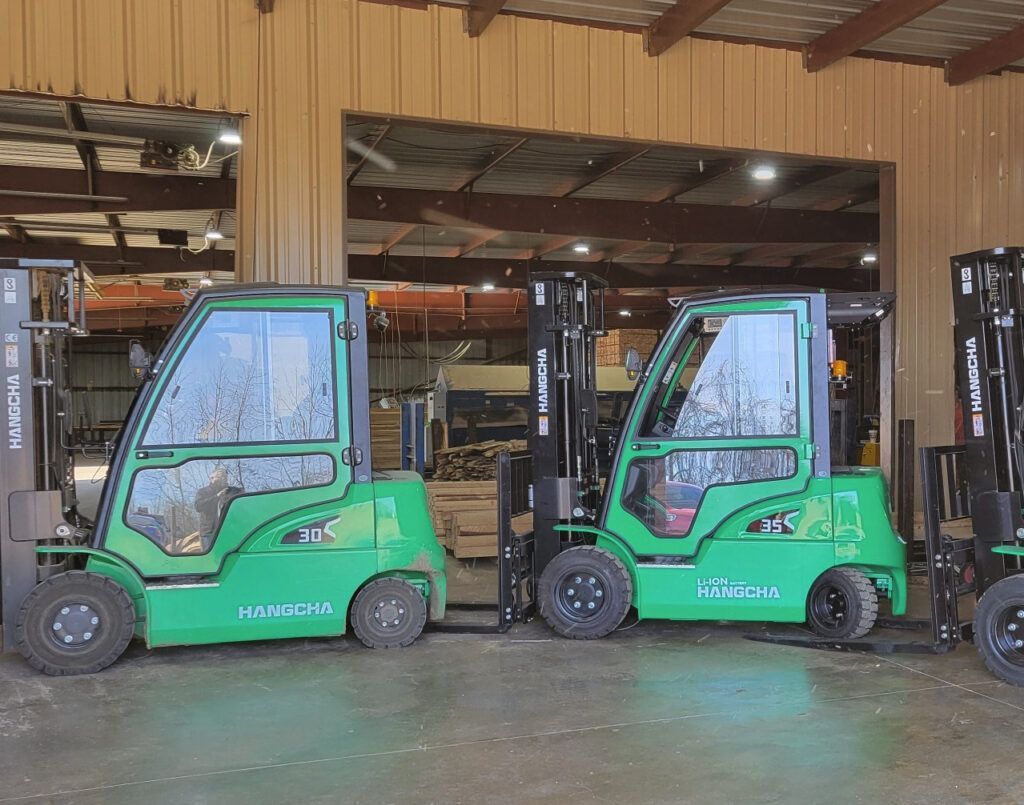3 Signs Your Forklift Needs Tires, Blades or Total Refurbishment
You Need Forklift Repair
You Need Forklift Repair. Forklifts are like cars in many ways. They’re both powerful four-wheelers that require regular service and maintenance. Forklifts, like cars, also wear down over time and need to be refurbished to extend their lifespan and make them safer. The trick for owners may be knowing when to take on necessary repairs and when it makes sense to completely refurbish your forklift. At Benco Industrial Equipment, our professionals are available to conduct forklift repair and discuss your refurbishment options.
Tires
The average set of forklift tires can handle thousands of pounds of pressure. That amount of weight can also wear them out quickly. Although warehouses generally enjoy smooth concrete floors, anytime these treads hit a rough spot or debris, gouging occurs. Here are three basic ways to know if you require tire replacement:
- Worn Low: Many forklift tires have a defined line to help know when they are becoming unsafe. Some call it the 50 percent wear line. It’s important to not operate a vehicle once that measure has been breached.
- Chunking: When tires start losing pieces or you see rubber starting to peel away, that’s a good time to replace them. It means they’re losing integrity and that could put an operator or bystander in harm’s way.
- Flattening: Some tires can wear out in odd spots. If they’re not well rounded, just replace them.
Forklift Blades
Blades are another safety concern and a common part that needs to be repaired or replaced. Having defective or uneven forks can lead to losing control of a load and could endanger the lives of your workers. Here are three things to look for when inspecting your forklift blades:
- Cracks on the surface of the forklift blades
- Height differences between the forklift blades
- Faulty position locking
When your forklift blades start to fade, stay safe and don’t hesitate to repair or replace them!
Total Refurbishment
Beyond these common surface maintenance issues, you’ll need to evaluate the cost of significant upkeep to make an informed decision about replacing a lift. The average forklift can put in anywhere from 10,000 to 20,000 work hours. Depending on how light the use, some go much further; however, with every few thousand hours, the cost of routine maintenance and potentially significant forklift repair increases.
After about 10,000 hours (or six to seven years of use), major and costly forklift repairs may start adding up. That’s the time when key operating necessities such as drive units, transmissions, engines, and electronic components begin to falter. Unlike the regular changing of tires and forks, the cost of these big-ticket items should start you thinking about total refurbishment. Here are three ways to think about refurbishing your forklift:
- Big Money: One simple way of planning when to refurbish and repair your forklift is to look at the expense in terms of hourly usage cost. Apply the repair and maintenance cost to the hours of use. In all likelihood, that will increase normally with age. But when that number spikes upward, make the change.
- Work Hours: Another way to plan a forklift repair or upgrade is based on work hours. Think in terms of how you’d trade a car in based on mileage. Set a threshold that factors in how heavy duty the workload against the number work hours. Before you get into the high-end repairs, make a preemptive change.
- Missing Forklift: When thinking about refurbishing an existing machine, keep in mind that when it’s being worked on, you’re typically down a forklift. Loss of productivity is a very real expense for any business. But with Benco, we make sure you have a loaner from our fleet so you wont have any downtime.
At Benco Industrial Equipment, we take great care in our forklift repair and refurbish all major brands. We understand that you can’t afford to be without a forklift during repairs, so we’ll make sure to bring you a short-term rental forklift from our fleet, keeping you productive even during forklift repairs.
The post 3 Signs Your Forklift Needs Tires, Blades or Total Refurbishment appeared first on Benco Industrial Equipment.




